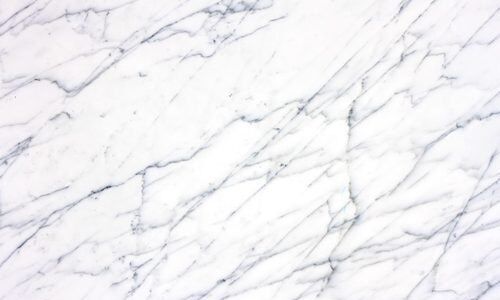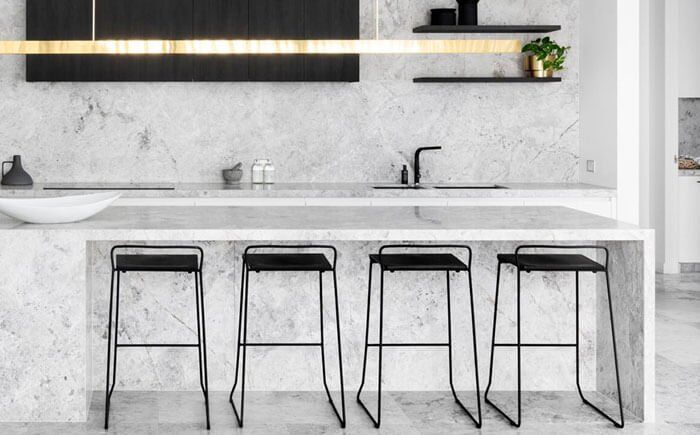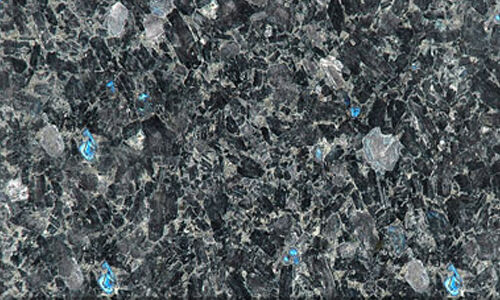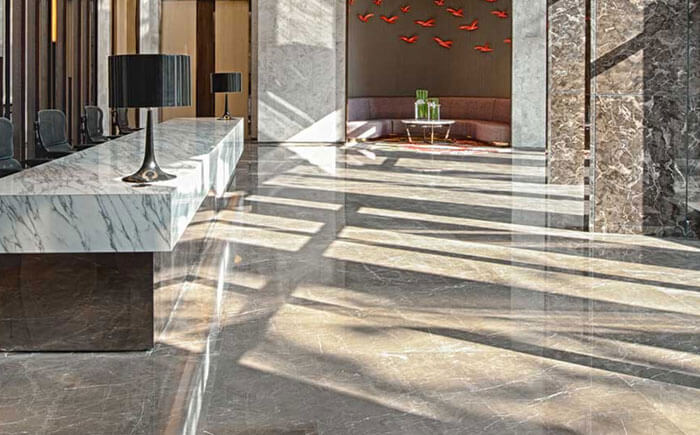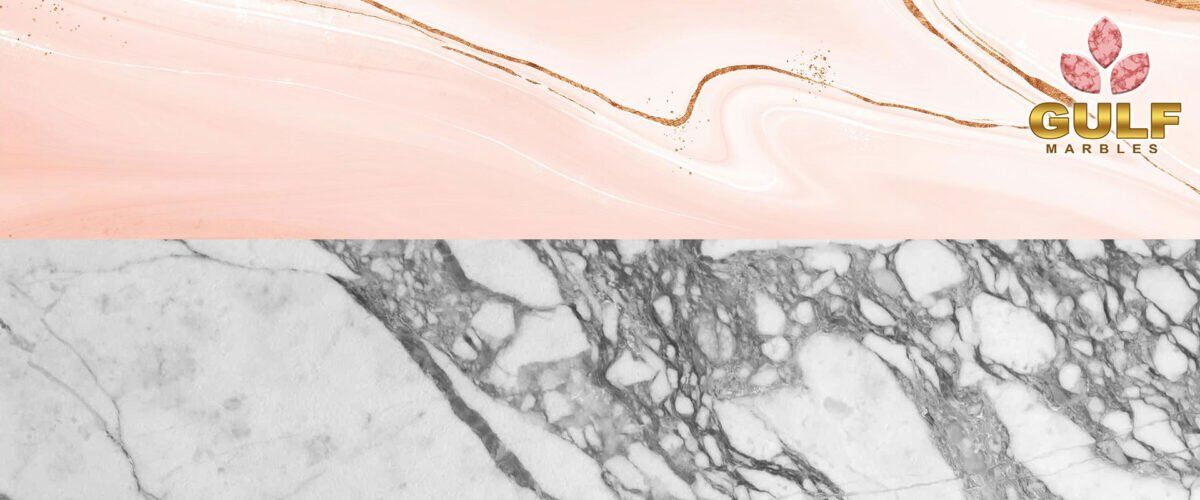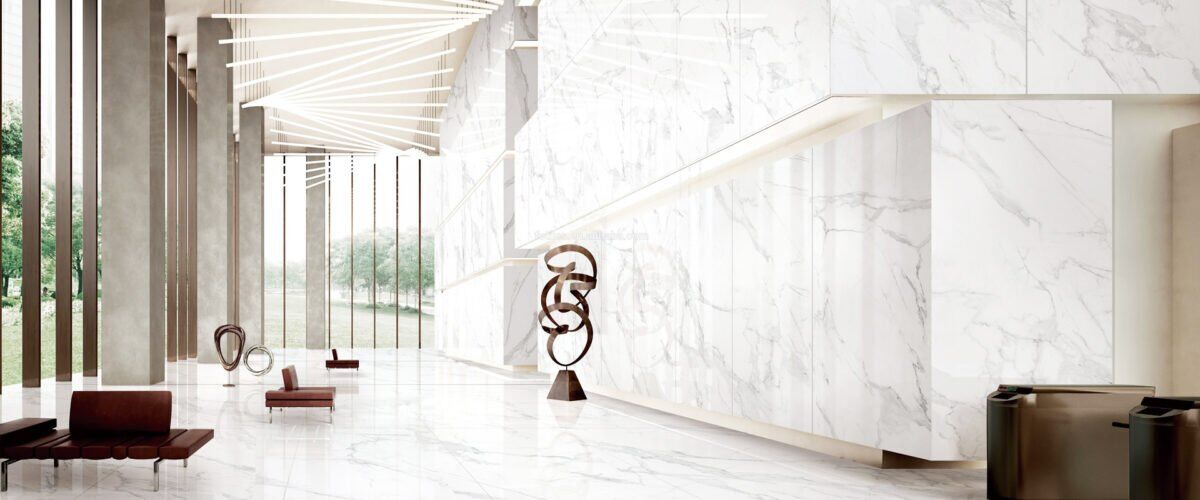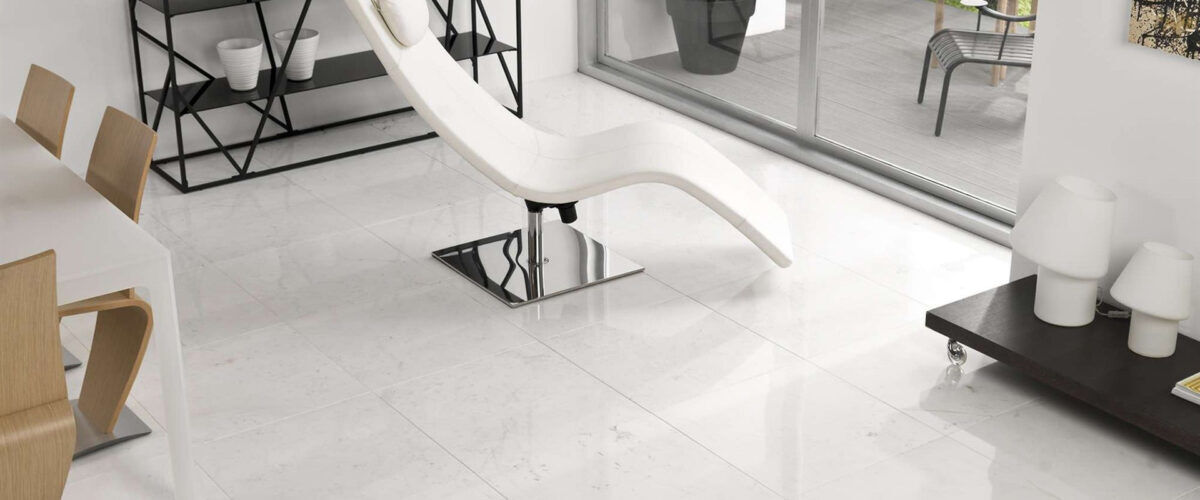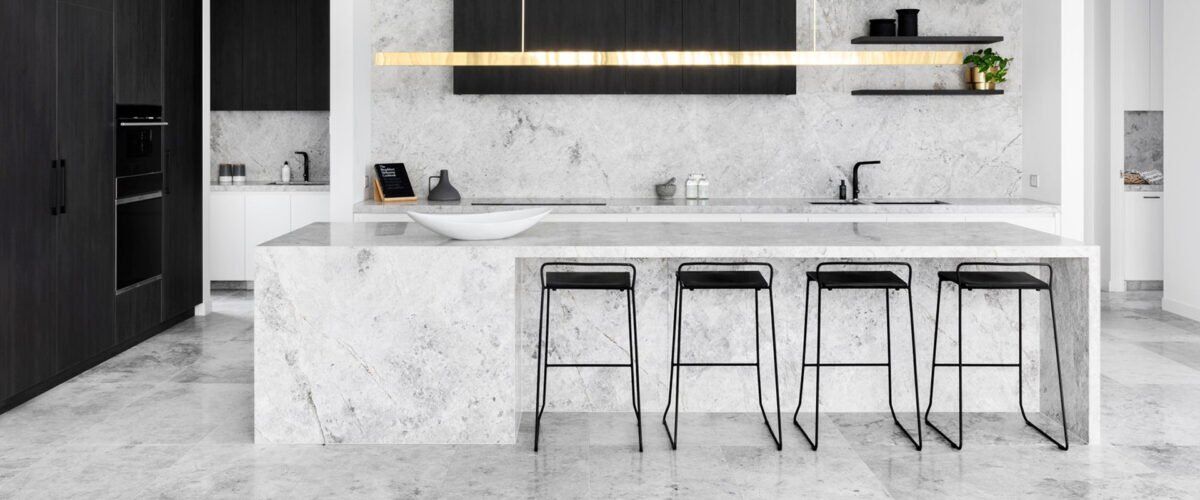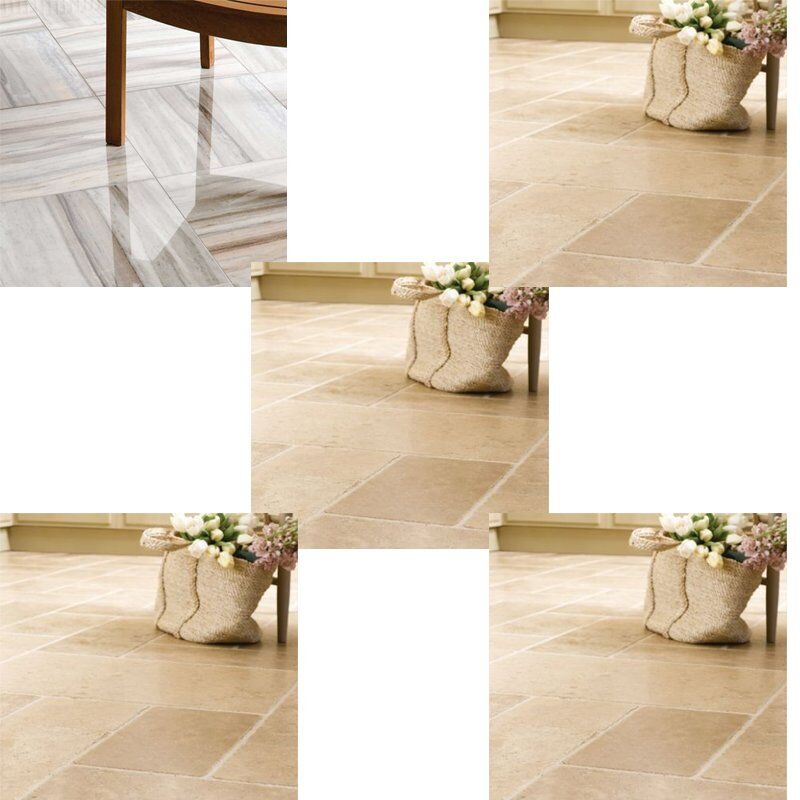The Timeless Elegance of Marble Countertops: A Comprehensive Guide
When creating a kitchen that exudes timeless elegance and luxury, few materials can rival the beauty and sophistication of marble countertops. Whether you’re embarking on a kitchen renovation project or designing your dream home, the allure of marble kitchen slabs is undeniable. This comprehensive guide will explore everything you need to know about marble countertops, from installation and maintenance to various design options. We will also compare marble to other popular countertop materials, such as granite, and delve into the world of marble’s stunning variations like Carrara and Calacatta. So, let’s embark on a journey through the world of marble countertops.
Kitchen Marble Slabs: The Epitome of Elegance
Marble has been a symbol of opulence and luxury for centuries, adorning ancient civilizations’ grand palaces and monuments. Today, this timeless stone is making a bold statement in modern kitchens. Marble kitchen slabs, with their intricate veining and excellent, smooth surface, create an ambiance of sophistication and class unmatched by other materials.
Marble Countertop Installation: A Job for Professionals
Installing marble countertops is a meticulous process requiring skilled professionals’ expertise. While embarking on a DIY project may be tempting, it’s crucial to recognize that marble is a delicate natural stone. Any missteps during installation can result in costly mistakes. Professional installers ensure the marble slabs are accurately cut, seamlessly joined, and properly sealed.
White Marble Kitchen Countertops: Timeless Beauty
White marble kitchen countertops are the epitome of timeless beauty. The purity and elegance of white marble, such as Carrara or Calacatta, can transform a kitchen into a breathtaking space. The subtle veining in white marble adds depth and character, making it a perfect choice for traditional and contemporary kitchen designs.
Marble Countertop Maintenance: A Labor of Love
While undeniably stunning, marble countertops require regular maintenance to preserve their beauty. Marble is porous and susceptible to staining, etching, and scratching if not correctly cared for. To keep your marble countertops looking their best, it’s essential to wipe up spills promptly, use cutting boards, and avoid harsh cleaning agents.
Marble Countertop Care: Tips for Longevity
Proper care and maintenance are crucial to extending the lifespan of your marble countertops. Here are some essential tips for caring for your marble surfaces:
- Daily Cleaning: Wipe down your marble countertops daily with a soft, damp cloth to remove dust and debris.
- Avoid Harsh Cleaners: Steer clear of abrasive or acidic cleaners, as they can damage the marble’s surface. Instead, use a mild, pH-balanced stone cleaner.
- Sealing: Regularly seal your marble countertops to protect them from stains and etching. The frequency of sealing depends on the type of marble and usage but typically ranges from every six months to a year.
- Use Trivets and Cutting Boards: Always use trivets for hot pots and cutting boards for chopping to prevent scratches and heat damage.
- Blot Spills Immediately: Marble is susceptible to staining, so it’s essential to blot up spills promptly with a clean cloth.
- Professional Polishing: Periodic professional polishing can restore the shine and luster of your marble countertops.
Natural Stone Countertops: A World of Choices
While marble is undoubtedly one of the most coveted natural stone countertop materials, other options exist. Granite, soapstone, and quartzite are popular for those seeking durable and aesthetically pleasing countertops. Each natural stone has unique characteristics, making it suitable for different kitchen styles and preferences.
Marble Countertop Designs: Unleash Your Creativity
The versatility of marble allows for an array of design possibilities. Whether you prefer a classic, minimalist, or eclectic look, a marble countertop design matches your vision. Some popular design options include:
- Vein-Matched Slabs: Choosing vein-matched marble slabs creates a striking and cohesive look, particularly for large kitchen islands.
- Waterfall Edge: A waterfall edge design, where the marble extends vertically down the sides of the cabinets, adds drama and elegance.
- Contrasting Islands: Consider using a different marble with a unique pattern for your kitchen island to create a focal point.
Best Marble for Kitchen Countertops: Carrara vs. Calacatta
Carrara and Calacatta marble are among the most sought-after varieties of kitchen countertops. While both are stunning, they have distinct characteristics:
- Carrara Marble: Carrara marble is a budget-friendly option with gray veining on white.
- Calacatta Marble: Calacatta marble is rarer and features bolder, more dramatic veining. It is often considered the pinnacle of luxury.
Marble Countertop Pricing: Luxury Comes at a Cost
While the beauty of marble is unparalleled, it’s essential to be aware that luxury comes at a cost. Marble countertops are generally more expensive than other materials, such as granite or quartz. The final price will depend on factors like the type of marble, thickness, size of the slabs, and installation costs.
Marble Countertop Suppliers: Choose Wisely
Selecting a reputable marble supplier is critical to ensuring the quality and authenticity of your marble countertops. Research potential suppliers, check their references, and ask for samples before deciding. Working with an experienced supplier can make a significant difference in the outcome of your project.
Marble Countertop Colors: A Spectrum of Choices
Marble countertops are available in various colors beyond the classic white varieties. You can find marble in shades of gray, black, green, and even pink. Each color variation brings its unique charm and character to your kitchen design.
Luxury Kitchen Countertops: Elevate Your Space
Marble countertops are synonymous with luxury kitchen design. Their inherent beauty and timeless appeal can elevate any kitchen space, showcasing elegance and sophistication.
Marble Countertop Sealing: Protecting Your Investment
Sealing your marble countertops is crucial in preserving their beauty and integrity. Sealants act as a protective barrier, preventing liquids from penetrating the stone and causing stains. Regular sealing is a part of proper marble countertop maintenance.
Marble Countertop Durability: Balancing Beauty and Strength
While marble is celebrated for its beauty, it’s essential to understand that it is softer and more porous than granite.
This means it can be more susceptible to scratches and staining. However, marble countertops have maintained their beauty for decades with proper care and maintenance.
Polished Marble Countertops: A Gleaming Finish
The polished finish is the most common choice for marble countertops. It enhances the stone’s natural beauty, providing a smooth, reflective surface that adds to the overall elegance of the kitchen.
Honed Marble Countertops: A Matte Alternative
Honed marble countertops are an excellent option for a softer, matte finish. Honing gives the marble a smooth, non-reflective surface that can create a more relaxed and understated look.
Cleaning Marble Countertops: Gentle Care
Cleaning marble countertops is a delicate process. Harsh or abrasive cleaners can damage the stone’s surface and finish. Instead, use a gentle, pH-balanced stone cleaner and avoid acidic substances like vinegar or lemon juice.
Marble vs. Granite Countertops: A Comparison
Both marble and granite are popular choices for countertops, but they have distinct differences. Here’s a brief comparison:
- Appearance: Marble is known for its elegance and unique veining, while granite offers a broader range of color options and patterns.
- Durability: Granite is generally considered more durable and less prone to scratching and staining than marble.
- Maintenance: Marble requires more maintenance, including regular sealing, while granite is lower maintenance.
- Cost: Marble is often more expensive than granite.
Carrara Marble Countertops: Timeless Elegance
Carrara marble is a classic choice for kitchen countertops. Its subtle gray veining on a white background lends a timeless elegance to any kitchen design. Carrara is a versatile option that complements both traditional and contemporary styles.
Calacatta Marble Countertops: The Epitome of Luxury
Calacatta marble is the epitome of luxury. Its bold and dramatic veining on a pristine white background makes it a statement piece in any kitchen. Calacatta is often reserved for high-end projects seeking the ultimate in sophistication.
Marble Kitchen Island: A Stunning Focal Point
A marble kitchen island can be a stunning focal point in your kitchen. Its natural beauty and durability make it an excellent choice for meal preparation and entertaining guests. You can use a different marble variety to create contrast with the rest of your countertops or maintain a cohesive look.
Countertop Edge Profiles for Marble: Customization Options
Choosing the right edge profile for your marble countertops can enhance the overall look of your kitchen. Standard edge profiles include beveled, bullnose, and ogee, each offering a different aesthetic appeal. Selecting the right edge profile is a matter of personal preference and the overall style of your kitchen.
Waterfall Edge Marble Countertops: A Striking Statement
A waterfall edge design, where the marble cascades down the sides of the cabinets, creates a striking statement. This design choice adds a sense of continuity and drama to your kitchen.
Marble Backsplash Ideas for Kitchens: Coordination and Contrast
Coordinating your marble countertops with your backsplash can create a harmonious and visually appealing kitchen design. Whether you match the materials or create contrast, marble backsplashes can elevate the overall aesthetics of your kitchen.
Affordable Marble Countertops: Budget-Friendly Options
While marble is known for its luxury, there are budget-friendly options available. To manage costs, you can explore alternative marble varieties or consider using marble for specific design elements, such as an island or backsplash.
Custom Marble Countertops: Tailored to Perfection
Customization allows you to create marble countertops tailored to your specific preferences. From selecting the type of marble and veining patterns to choosing edge profiles and dimensions, custom marble countertops reflect your unique style.
Installing Marble Countertops DIY: Proceed with Caution
While DIY projects can be rewarding, installing marble countertops should not be taken lightly. Due to the delicacy of the stone and the precision required for installation, it’s advisable to leave this task to professionals. Attempting a DIY installation can lead to costly mistakes and damage to the marble.
If you love the look of marble but are concerned about maintenance, consider alternatives such as quartz countertops that mimic the appearance of marble without the same level of care required. These engineered materials offer a marble look with added durability and ease of maintenance.
Marble countertops kitchens symbolize timeless beauty and luxury, transforming kitchens into spaces of elegance and sophistication. Whether you opt for classic Carrara, opulent Calacatta, or another marble variety, these natural stone surfaces are a statement of enduring style. While they require proper care and maintenance, their unparalleled aesthetics make them a worthwhile investment. Choosing a reputable supplier is essential when considering marble countertops, ensuring professional installation, and implementing a maintenance routine to protect your investment. Whether you aim for a traditional, minimalist, or eclectic kitchen design, marble countertops provide the canvas for your culinary masterpiece. So, embrace the allure of marble and elevate your kitchen to new heights of elegance.

